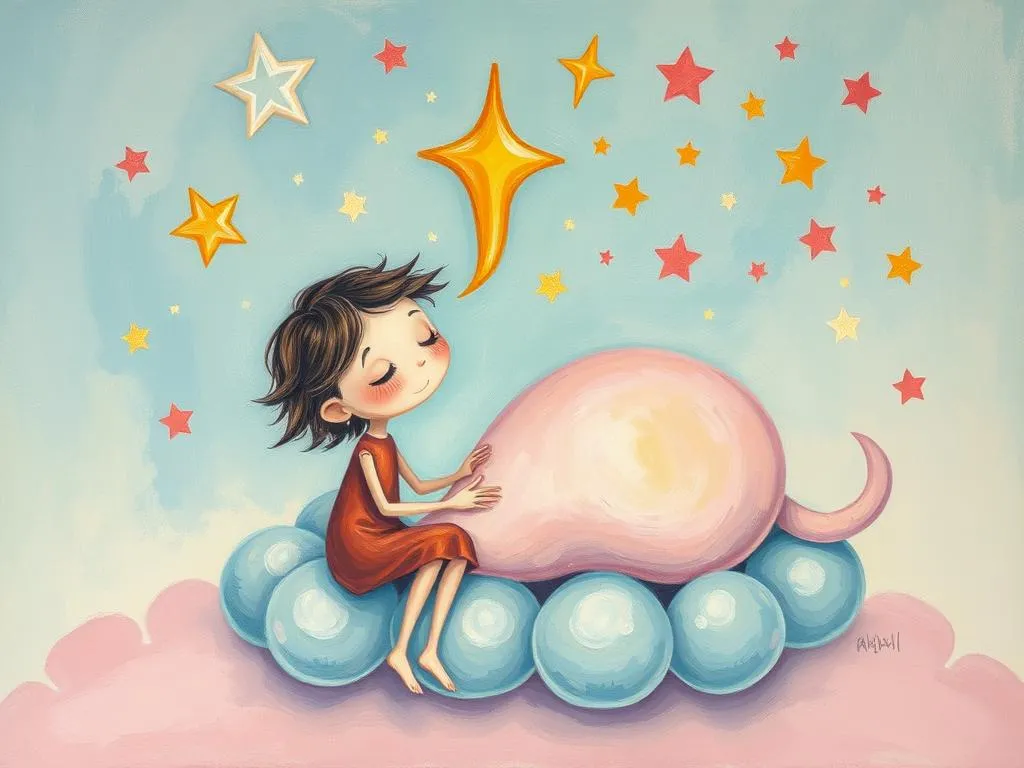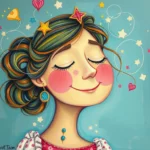
Dreams have fascinated humanity for centuries, serving as a window into the subconscious. They intrigue us not only because of their mystique but also because they often reflect our innermost thoughts, feelings, and experiences. As we sleep, our minds weave together memories, emotions, and symbols that can provide insights into our waking lives. Among these symbols, some are considered good or positive, often representing hope, inspiration, and personal growth. Understanding these good dream symbols can enhance our self-awareness and help us navigate our daily lives more effectively.
Symbolism and Meaning
Dreams are rich in symbolism, and certain symbols resonate deeply with our emotions and experiences. Exploring the meaning of these symbols can illuminate aspects of our lives that we may not consciously acknowledge.
For instance, water is a prevalent symbol in many dreams. Depending on its condition, water can represent different aspects of our emotional state. Calm seas often signify peace and tranquility, whereas stormy waters might indicate emotional turmoil or challenges. When one dreams of swimming in clear, serene water, it suggests a sense of clarity and emotional stability. This symbol encourages the dreamer to embrace their feelings and navigate their emotions with grace.
Another common symbol is light, often associated with enlightenment, clarity, and inspiration. Dreaming of bright, radiant light can signify a breakthrough in understanding or a newfound perspective on a situation. This light can also represent hope, illuminating the path forward during challenging times. Conversely, dim or flickering light can indicate uncertainty or confusion, suggesting the need for introspection and clarity.
Animals frequently appear in dreams and can symbolize various traits and instincts. For example, dreaming of a dove often represents peace and love, suggesting harmony in one’s relationships. A lion can symbolize courage and strength, urging the dreamer to confront their fears with confidence. The presence of these animals can serve as a reminder of the qualities we possess or aspire to embody in our waking lives.
Lastly, growth-related symbols, such as flowers or trees, carry powerful meanings. Flowers in dreams can symbolize beauty, growth, and potential. A blooming flower can signify personal development or the blossoming of new opportunities. Trees, particularly those with strong roots and lush foliage, symbolize stability and resilience, reminding the dreamer of their ability to weather life’s storms and continue growing.
These symbols, while having universal meanings, can also vary significantly based on personal experiences and cultural backgrounds. Therefore, it is crucial to consider one’s unique context when interpreting symbols in dreams.
Key Scenarios and Variations
While good dream symbols often convey positive messages, the scenarios in which they appear can greatly influence their interpretation. For instance, dreaming of flying is generally associated with freedom and liberation. However, the context can shift its meaning. If the dreamer feels exhilarated while soaring through the skies, it may suggest a sense of empowerment and achievement. Conversely, if the dreamer struggles to gain altitude or feels anxious while flying, it might indicate underlying fears or a sense of being overwhelmed.
Another scenario to consider is dreaming of finding treasure. This dream usually represents discovering hidden talents, potential, or unacknowledged aspects of oneself. However, the nature of the treasure can alter its significance. For instance, gold coins might symbolize wealth and material success, while jewels could represent emotional richness and the value of relationships. The dreamer’s feelings upon discovering the treasure—excitement, joy, or even anxiety—will also play a crucial role in shaping the interpretation.
Meeting a mentor or wise figure in a dream can also serve as a powerful symbol. Such dreams often indicate a desire for guidance or support in waking life. The mentor’s appearance can symbolize wisdom and knowledge, urging the dreamer to seek out learning opportunities or to trust their intuition. However, if the mentor’s demeanor is stern or unapproachable, it could reflect feelings of self-doubt or the pressure to meet expectations.
Additionally, dreaming of celebrations, such as birthday parties or weddings, generally reflects joy and fulfillment. However, if the dreamer feels disconnected or out of place during the celebration, it might indicate feelings of isolation or a need for deeper connections in their waking life. This duality highlights the complexity of dream interpretation, as the emotional context can shift the meaning of a seemingly positive symbol.
Through these various scenarios, it becomes evident that the interpretation of good dream symbols relies heavily on the dreamer’s feelings and experiences. The same symbol can carry different meanings based on personal context, reminding us that dreams are deeply personal and nuanced.
Real-Life Connections and Takeaways
Understanding good dream symbols can provide valuable insights into our waking lives. By reflecting on our dreams and the emotions they evoke, we can uncover hidden truths and gain clarity on our current situations. Here are some practical ways to connect these dreams to real-life experiences and foster self-reflection.
First, keep a dream journal. Writing down your dreams upon waking can help you capture their details and emotions before they fade. Over time, patterns may emerge, revealing recurring symbols and themes. As you document your dreams, consider how the symbols relate to your daily life. What challenges are you facing? What aspirations do you hold? This process can deepen your self-awareness and help you recognize areas for growth.
Next, engage in self-reflection. After recording your dreams, take time to ponder their meanings. Ask yourself questions such as: How did I feel during the dream? What symbols stood out to me? How do these symbols resonate with my current life situation? This introspective approach can unveil connections between your dreams and your waking experiences, allowing for personal insights and growth.
Consider seeking guidance from trusted sources, such as books on dream interpretation or online resources. Engaging with different perspectives can enrich your understanding of dream symbols and their meanings. However, remember that the most important interpretations come from your intuition and personal experiences.
Finally, use the positive symbols from your dreams as motivational tools. For example, if you dream of flying and feel empowered, consider how you can incorporate that sense of freedom into your waking life. What steps can you take to break free from limitations or pursue your passions? By actively engaging with the messages from your dreams, you can harness their positive energy to inspire action and personal growth.
In conclusion, good dream symbols offer a unique lens through which we can explore our subconscious and gain valuable insights into our lives. By understanding their meanings, reflecting on our experiences, and connecting them to our waking realities, we can unlock our potential for growth and transformation. Remember that dreams are deeply personal, and their interpretations can vary widely. Trust your intuition as you navigate this fascinating landscape, and allow your dreams to guide you toward greater self-awareness and fulfillment.







